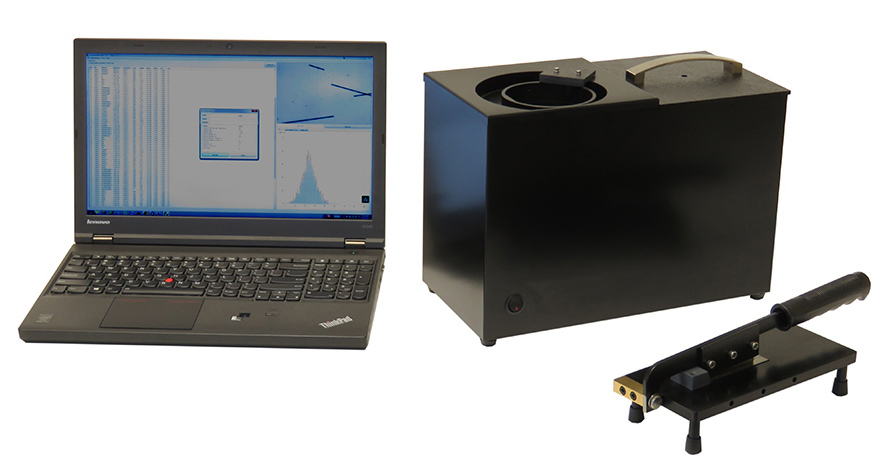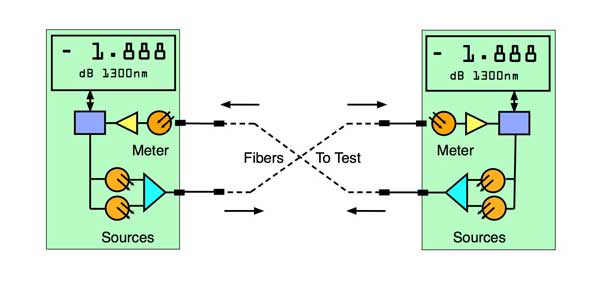Increasing Output Accuracy with an Optical Fibre Diameter Analyser
Increasing Output Accuracy with an Optical Fibre Diameter Analyser
Blog Article
Maximize Your Fiber Optic Efficiency: Comprehending Optical Fibre Size Analyser Modern Technology
The performance of fibre optic systems is seriously affected by the precision of their size, a factor typically overlooked in the search of optimal signal integrity. Understanding the modern technology behind optical fibre diameter analysers discloses the detailed equilibrium in between dimension accuracy and manufacturing high quality.
Relevance of Optical Fiber Diameter
The size of optical fibre plays an important duty in identifying the performance and performance of interaction systems. Conversely, smaller diameters have a tendency to sustain fewer modes, which can enhance signal clearness and decrease crosstalk.

Additionally, understanding the size's ramifications can lead to set you back savings by lowering the need for signal boosting and repeaters in considerable networks (optical fibre diameter analyser). To conclude, the importance of optical fiber diameter can not be overemphasized, as it straight impacts the overall effectiveness and dependability of modern-day interaction systems

Just How Size Affects Signal Quality
Signal high quality in optical fiber systems pivots considerably on the size of the fibre. The diameter affects a number of crucial parameters, including depletion, data transfer, and modal diffusion. A smaller sized size can result in higher attenuation rates, resulting in signal loss as light trips through the fiber. This depletion can compromise the honesty of the transmitted data, bring about a decline in signal high quality, specifically over lengthy ranges.
Conversely, bigger sizes usually enable for improved light capture and lowered modal diffusion, boosting signal clarity. In multimode fibres, a larger core diameter can sustain numerous light settings, yet it might additionally present intermodal dispersion, which can weaken signal top quality. Therefore, selecting the optimal fibre diameter is vital for accomplishing the desired efficiency in details applications.
Moreover, the interaction in between the fibre diameter and the wavelength of the light used plays an essential duty in determining the effective transmission distance and general signal integrity. As such, comprehending exactly how fibre size impacts signal quality is essential for network designers and engineers aiming to maximize optical fiber systems for reliable, high-speed information transmission.
Summary of Size Analyser Innovation
In lots of optical fibre manufacturing processes, accurate dimension of fibre diameter is vital for guaranteeing consistent efficiency and high quality (optical fibre diameter analyser). Diameter analysers are sophisticated tools made to evaluate the physical dimensions of optical fibers with high precision. They use sophisticated optical and laser modern technologies to gauge the size, ovality, and concentricity of the fiber, therefore supplying critical data for quality assurance
These analysers can operate in-line during the manufacturing procedure or as component of my site off-line screening procedures. In-line systems allow real-time monitoring, allowing makers to readjust specifications right away, consequently keeping optimum production problems. Off-line analysers, on the various other hand, give comprehensive assessments of batches, guaranteeing that any type of discrepancies from defined resistances are determined and attended to.
Diameter analysers substantially contribute to the reduction of problems in optical fibres, boosting total item dependability. By consistently gauging crucial parameters, these modern technologies assist in conformity with industry requirements and requirements. As the need for high-performance optical fibres proceeds to climb, the function of diameter analysers becomes progressively vital in attaining the preferred high quality and performance criteria in fiber optic systems.
Key Functions of Fiber Size Analysers
Although different versions of fiber size analysers exist, they typically share numerous key attributes that improve their capability and integrity. Among the most considerable attributes is high-resolution dimension capacities, which ensure specific diameter readings, important for keeping high quality control in fiber production. Furthermore, numerous analysers include advanced optical sensors created to identify minute variations in fibre size, thus supplying very useful information for procedure optimization.
An additional essential function is real-time monitoring, allowing operators to receive immediate responses on fiber diameter throughout the production procedure (optical fibre diameter analyser). This capacity assists in quick adjustments and reduces the likelihood of defects. Lots of analysers likewise come equipped with straightforward interfaces, making it possible for operators to conveniently navigate via data and settings results
Additionally, durable data storage space and analysis functionalities are necessary for tracking historical efficiency patterns and making sure conformity with sector standards. Some designs even provide connection alternatives for assimilation into existing manufacturing control systems, improving general functional efficiency. Mobile and portable designs enable for adaptable deployment within manufacturing settings, ensuring that top quality guarantee procedures are smooth and reliable. These functions jointly add to the efficiency of fibre size analysers in enhancing fiber optic performance.
Ideal Practices for Fibre Optimization

First, regular calibration of optical fiber diameter analysers is vital. This makes certain exact dimensions and lessens potential inconsistencies that can impact performance. Next visit this site right here off, preserving a clean working setting is important; dirt and impurities can bring about signal degradation.
Additionally, it is essential to choose fibers that meet specific application needs. This includes reviewing variables such as depletion, bandwidth, and environmental conditions. Correct installation strategies ought to additionally be adhered to, consisting of preventing sharp bends and extreme tension, which can compromise fibre integrity.
Furthermore, using sophisticated monitoring systems can help with real-time efficiency assessments, making it possible for timely identification of issues. Regular screening and upkeep should be performed to guarantee that fibres continue to be within optimal operational criteria.
Finally, training personnel on the most up to date click site fibre optimization innovations and methodologies will enhance their capacity to implement reliable strategies. By complying with these finest practices, companies can considerably boost the efficiency and lifespan of their optical fibre systems, making sure reliable communication and information transfer.
Verdict
In verdict, the assimilation of optical fibre diameter analyser innovation is essential for making best use of fiber optic performance. By ensuring precise measurements of fibre measurements, these analysers substantially enhance signal top quality and reduce losses throughout data transmission.
Signal quality in optical fibre systems pivots dramatically on the size of the fiber.In lots of optical fibre production processes, precise dimension of fiber diameter is crucial for making certain constant efficiency and quality. As the demand for high-performance optical fibers continues to increase, the role of size analysers comes to be significantly vital in attaining the desired top quality and performance requirements in fibre optic systems.
These attributes collectively contribute to the effectiveness of fiber diameter analysers in maximizing fiber optic performance.
In verdict, the integration of optical fiber diameter analyser innovation is critical for taking full advantage of fibre optic performance.
Report this page